Badami
#badamicave



The Deccan Plateau is a strange place. Made of lava flow many millions of years ago, it has been chiseled by sun, air, rain and other natural forces into imposing rock formations, deep ravines, yawning caves, solitary hills and canyons. Among the brown rocky landscape, all of a sudden you will come across tranquil lakes and rippling rivers. Badami is one such beauty spot amid arid land and desolate brown hills. Once you cross those hills and drive down into the viridiscent sprawling bowl, the whole atmosphere becomes mellower. This is Badami, earlier known as Vatapi! Remember the two Rakshaka brothers Vatapi and Ilwal from the epic Ramayana, who were punished by the sage Agasthya? A beautiful green lake in front of the famous cave temples of Badami now bears his name.
Deccan had always been somewhat inaccessible to the kings ruling in the Gangetic plains of North India. Very few empires extended to south of the Vindhyas, Samudragupta’s empire was one of them. In the 6th century though, the southern dynasties gained power and the Chalukya kings emerged. One of the branches of the Chalukyas, took Vatapi as their capital and came to be known as the Vatapi or Badami Chalukyas. The Cave Temples of Badami were all created in the 6th century during the reign of the Badami Chalukyas.
There are four main cave temples in Badami, all curved out of soft red-brown sandstones. All of them are accessible through steps, the lowest one is Cave Temple 1. The highest one, Cave Temple 4 is a Jain temple, the rest are dedicated to Hindu gods. The car needs to be parked at the base of the caves where the ticket counter is. Climb up a few steps, and you are standing in front of the unique sculpture of the eighteen-armed Shiva-Natesha, the King of Dancers.
The cave sculptures are mostly reliefs on the sides of the walls, on the pillars and the ceiling. The first cave is dedicated to Lord Shiva. As you ascend the few steps into Cave 1, Shiva-Natesha is on your right. The sanctums are deep into the caves but the floor is more or less plain.Even the outside area is level. After almost 1500 years, it is difficult to say how much of the fore-ground is naturally plain, and how much was made that way. The raised platform of the temple has relief of dwarves in various postures. Then climb another set of steps and you enter the actual temple. This is hollowed out of the inside of the sandstone hill and the ceiling is supported by a number of decorated pillars and brackets. Inside is a statue of Nandi, the Bull, facing the Shivalinga inside the temple. The walls above the pillars and the ceiling are also sculpted with various mythical figures, such as the Vidyadharas, as well as pure decorations and enamoured couples. The pillars in the front are more lavishly decorated than the pillars on the inside.
There are two more important sculptures, the Hari-Hara, where the two deities Shiva and Vishnu are merged. Another prominent sculpture is the Dwarapala, the door-keeper.
Climbing a few rows of steps will take you to the next cave, which is dedicated to Vishnu. Cave 2 contains several reliefs of Vishnu’s various incarnations. The most striking among them are the Varaha-Avatar and the Vamana-Avatar, after he has revealed himself to Bali Raja.
Cave 3 is the largest temple in this complex and the most intricately curved. It even has colour frescoes on the ceiling, though the colour is not as well-preserved and as vibrant as in Ajanta. Cave Temple 3 is dedicated to Maha-Vishnu and several sculptures from Cave Temple 2 have been repeated in this cave, though they are not identical to the previous one. The most striking sculpture in this cave is Vishnu sitting on the throne of Ananta Naga.
As you move up along the rows of steps from Cave Temple 1 to Cave Temple 4, the lake on your left becomes more and more visible in its full entirety. It is a lovely lake, big, cool and green - a rain water harvest lake from the time of Badami Chalukyas. It is the catchment of all the deluge that occurs from time to time during the monsoon season. The dry arid place suddenly overflows with rain water and the far-sighted kings of almost two millennia ago made arrangement that the water is not wasted. Unlike modern India, where the wetlands and lakes are filling up with silt deposits and the monsoon rain plays havoc when it overflows the dams,
Agasthya Lake must have been dug deep enough to supply water all year round to the capital city. Its sides have wide steps going down into the water. You can spend some time sitting on the steps and cool your tired feet in the water. But be careful, there is no hand rail or any other safe guard.
Once you reach the topmost cave, time to stop and take a deep breath. Badami is a naturally beautiful place. It reminded me strongly of the western states in America, such as Utah and Arizona. Of course it does not have the wild beauty of desolation. But it has an azure sky and an emerald lake surrounded by craggy cliffs in all shades of brown. The steps end at Cave 4. Relax and look around. On a clear day, like the day I visited, you can see forever.
Reply here
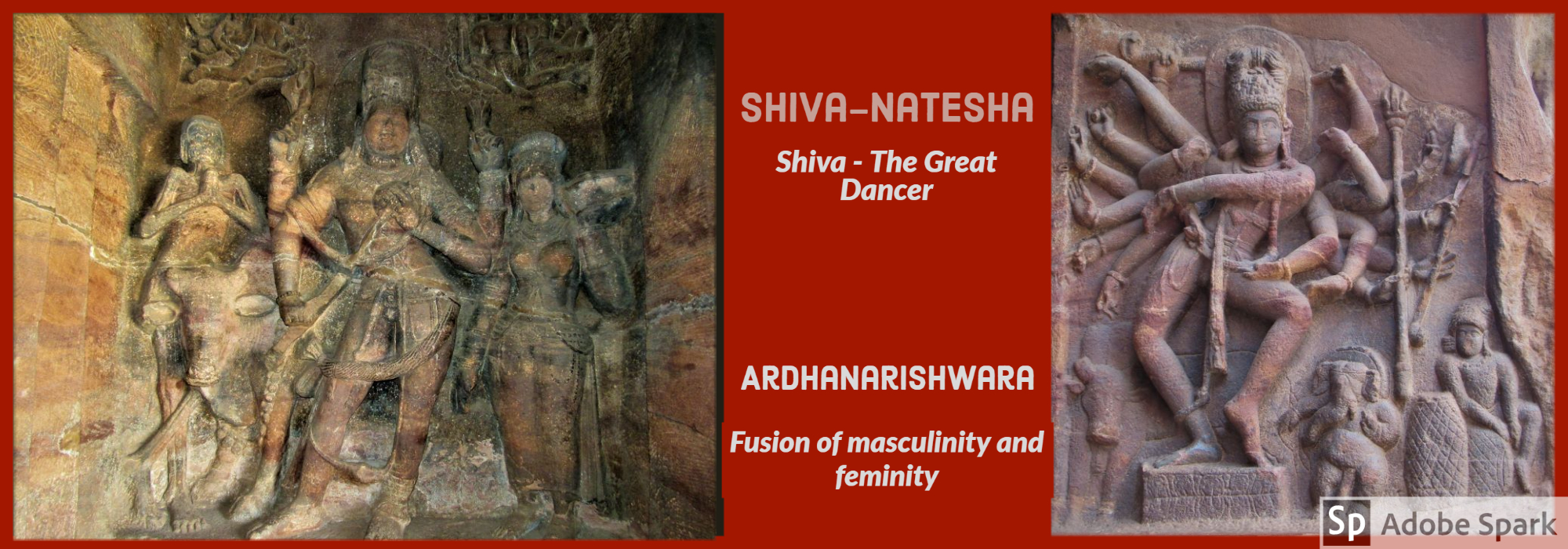
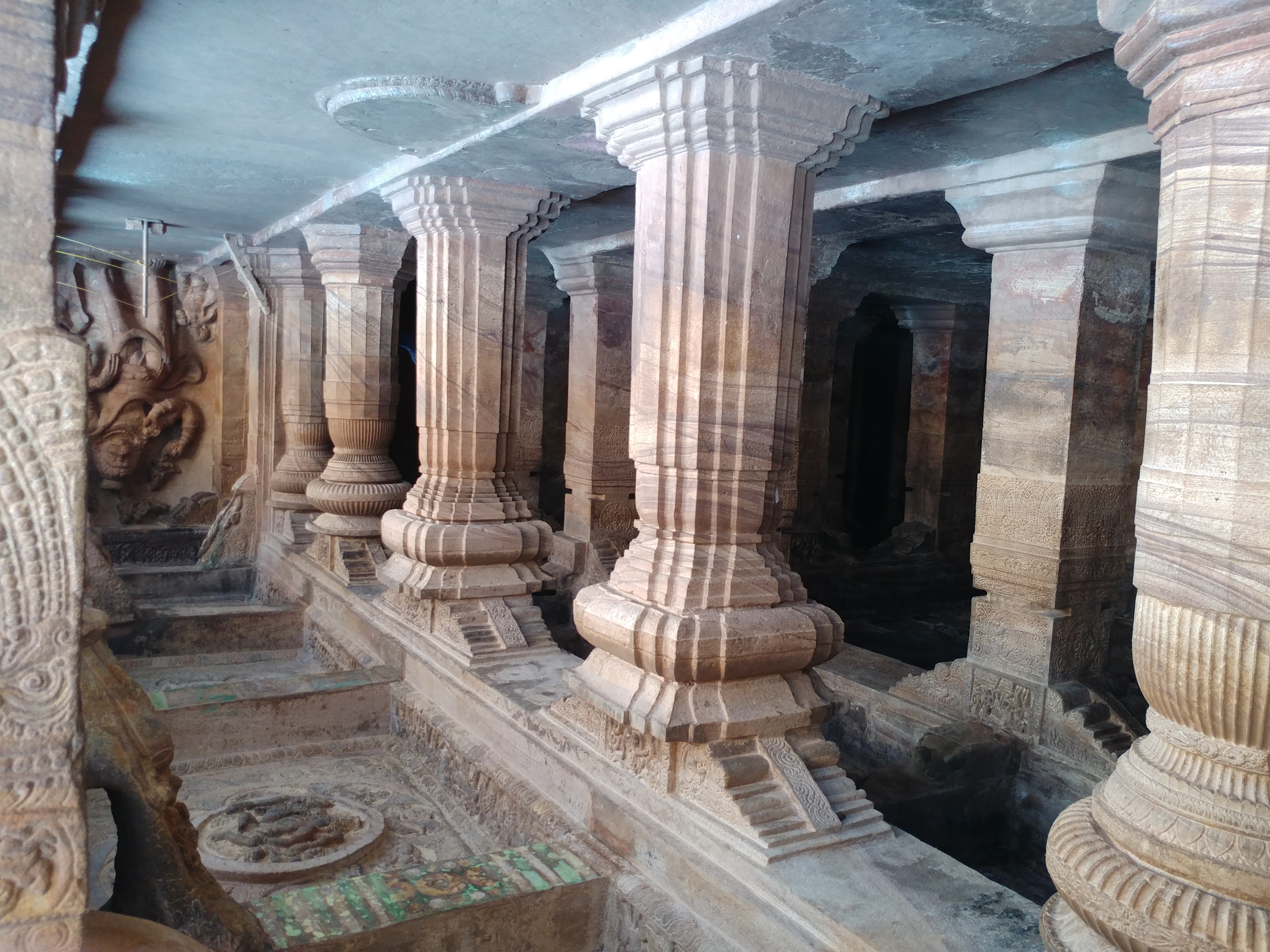 Cave Temple 1
Cave Temple 1
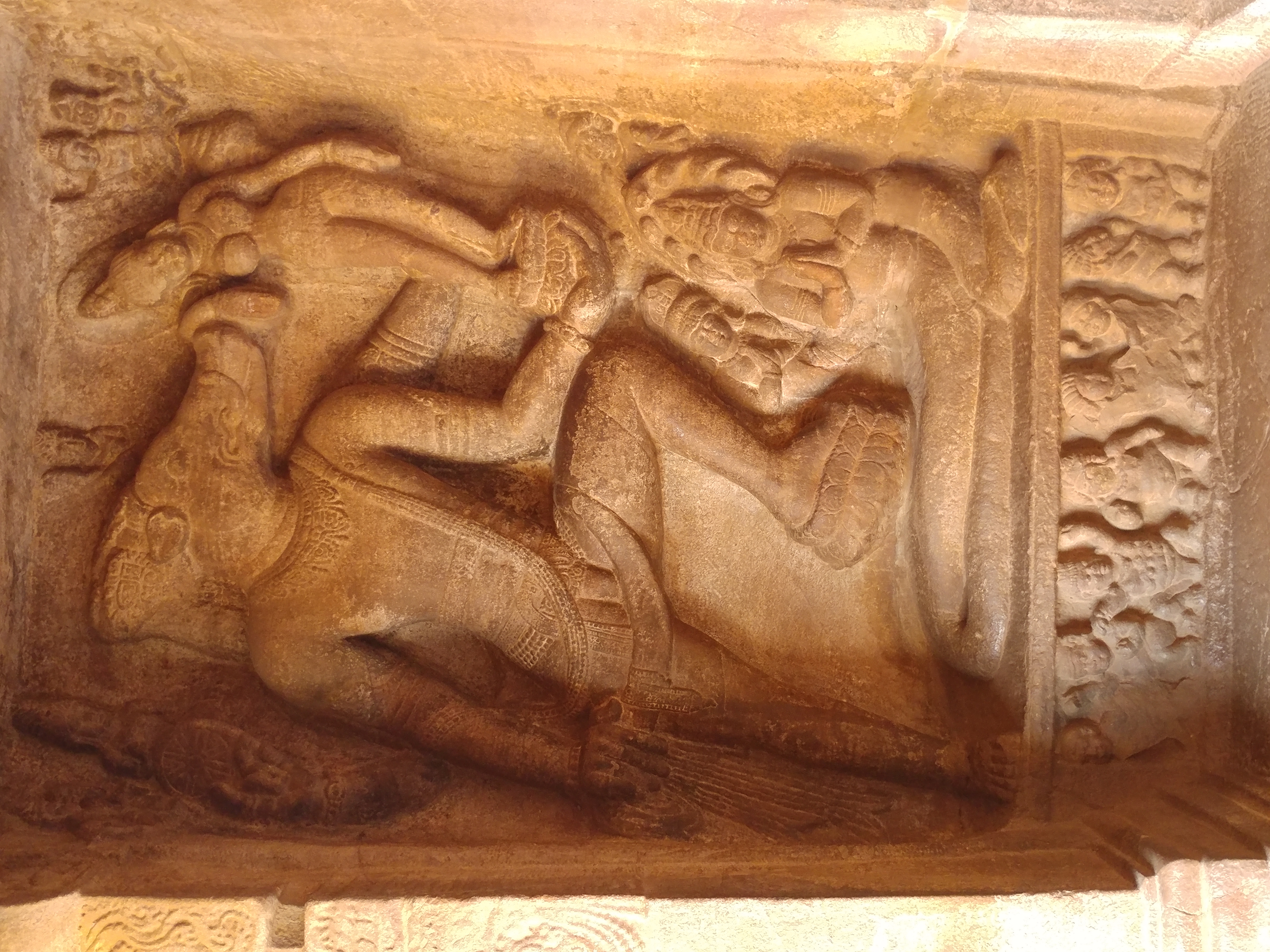 Varaha Avatara Cave 2
Varaha Avatara Cave 2
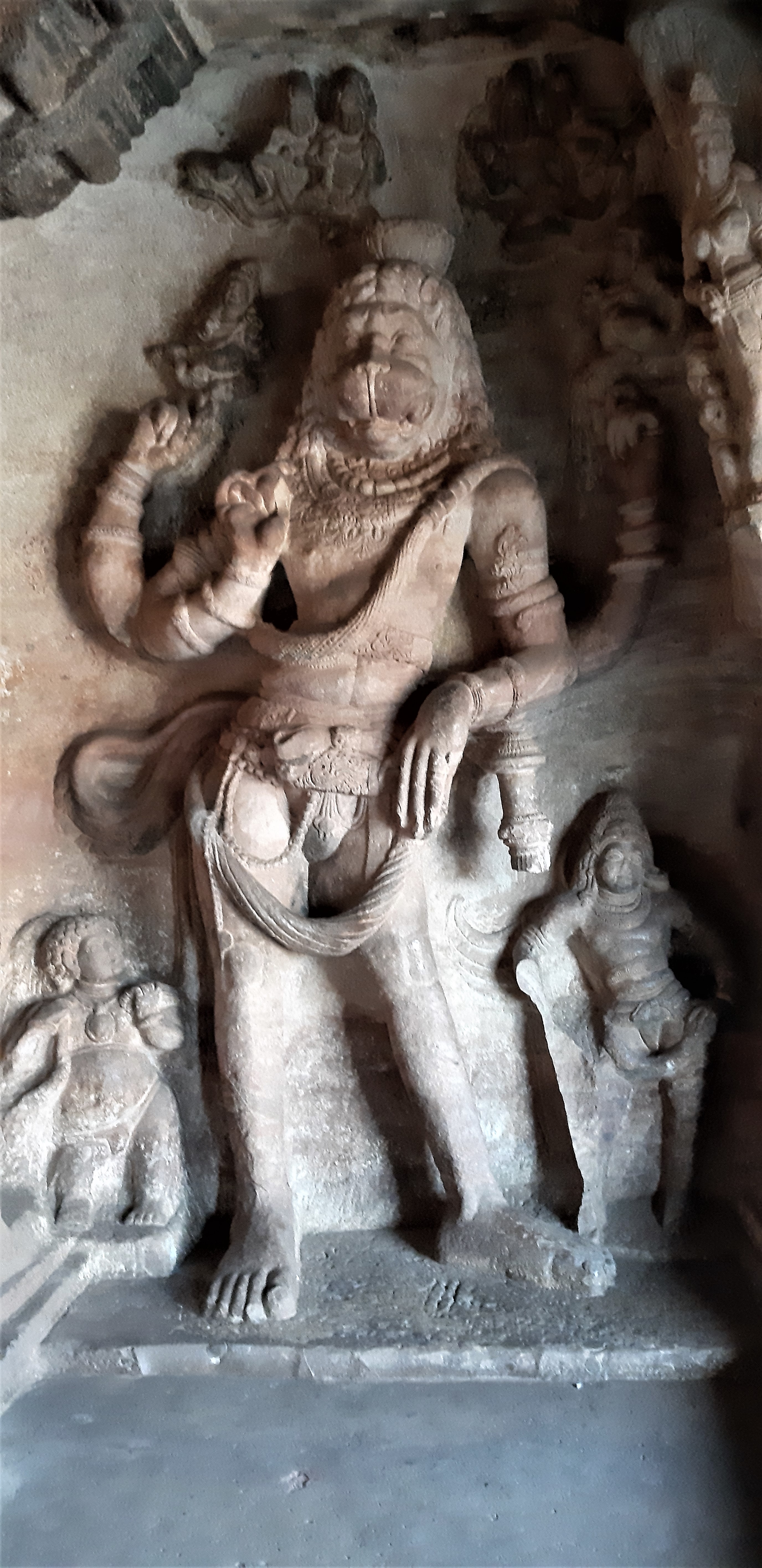 Narasimha Avatara Cave 3
Narasimha Avatara Cave 3
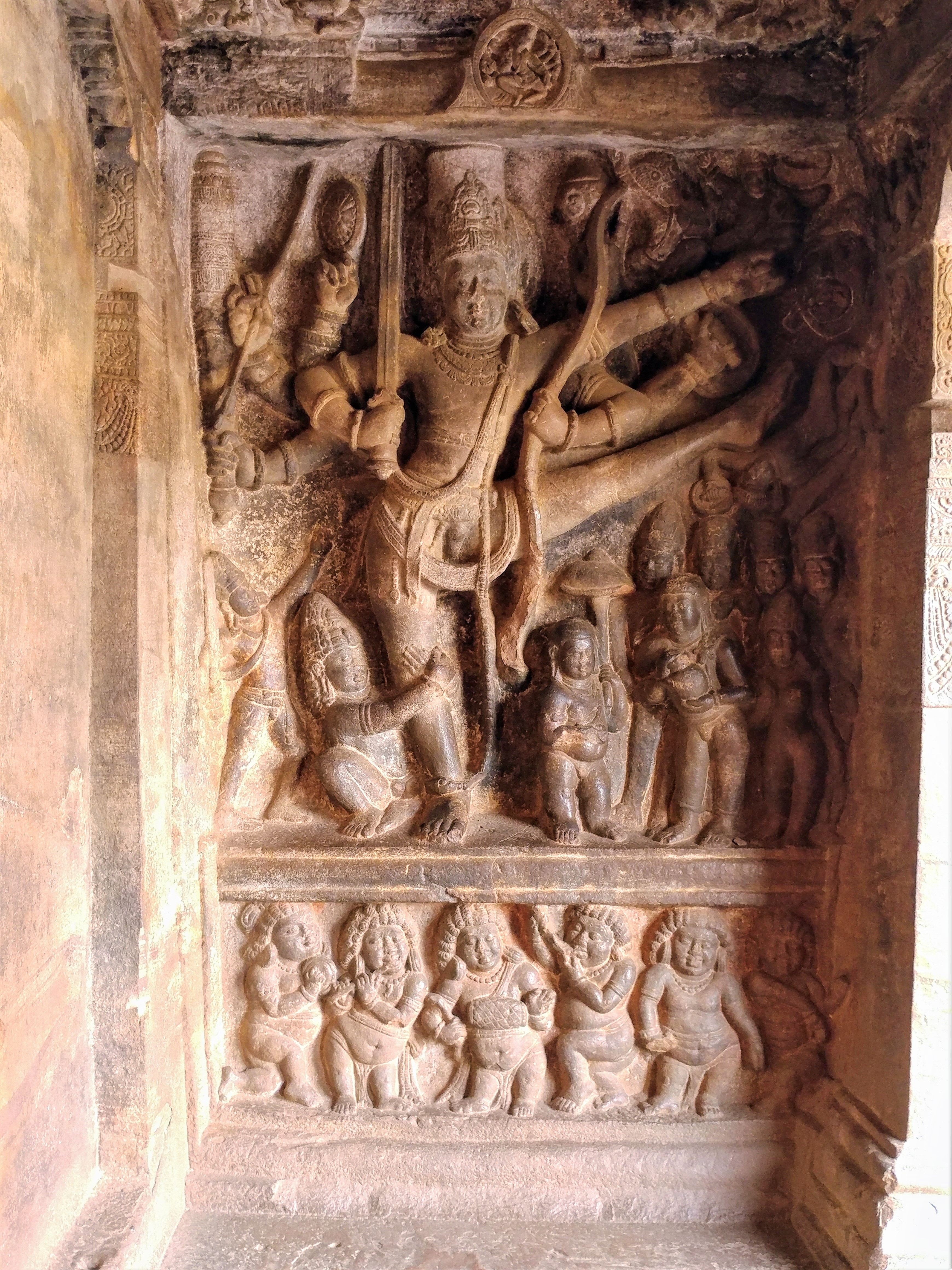 Vamana Avatar Cave 2
Vamana Avatar Cave 2
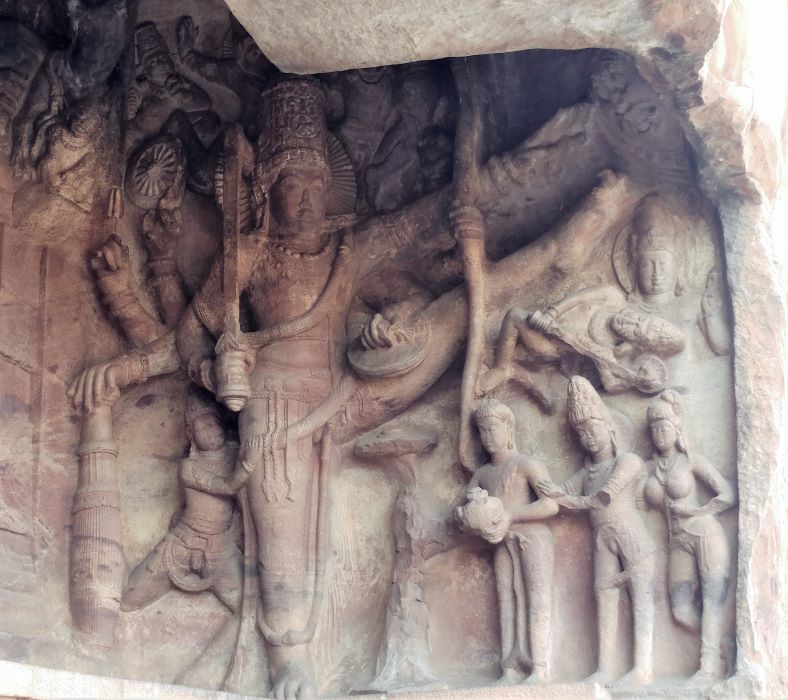 Vamana Avatar Cave 3
Vamana Avatar Cave 3
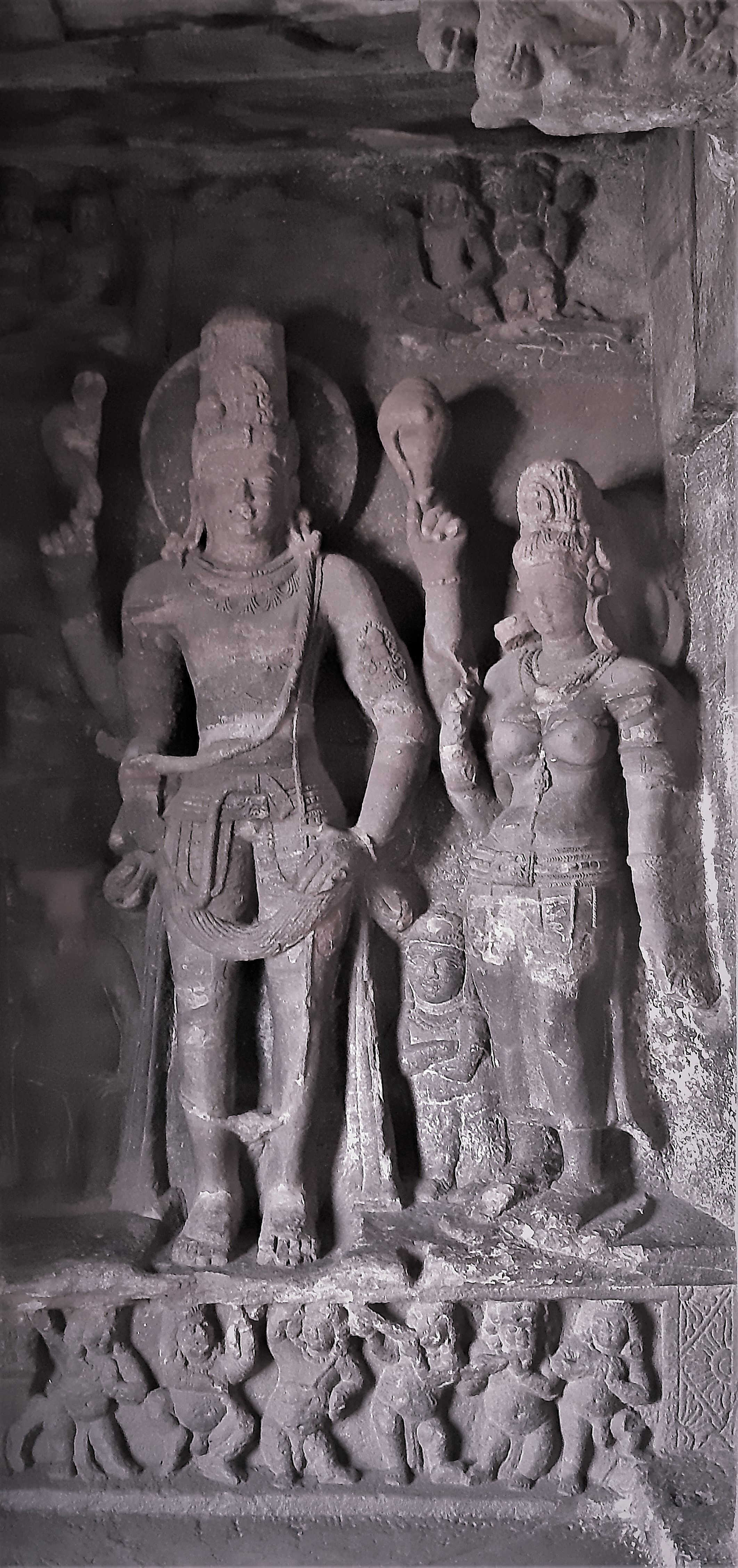 Hari-Hara: Cave 1
Hari-Hara: Cave 1
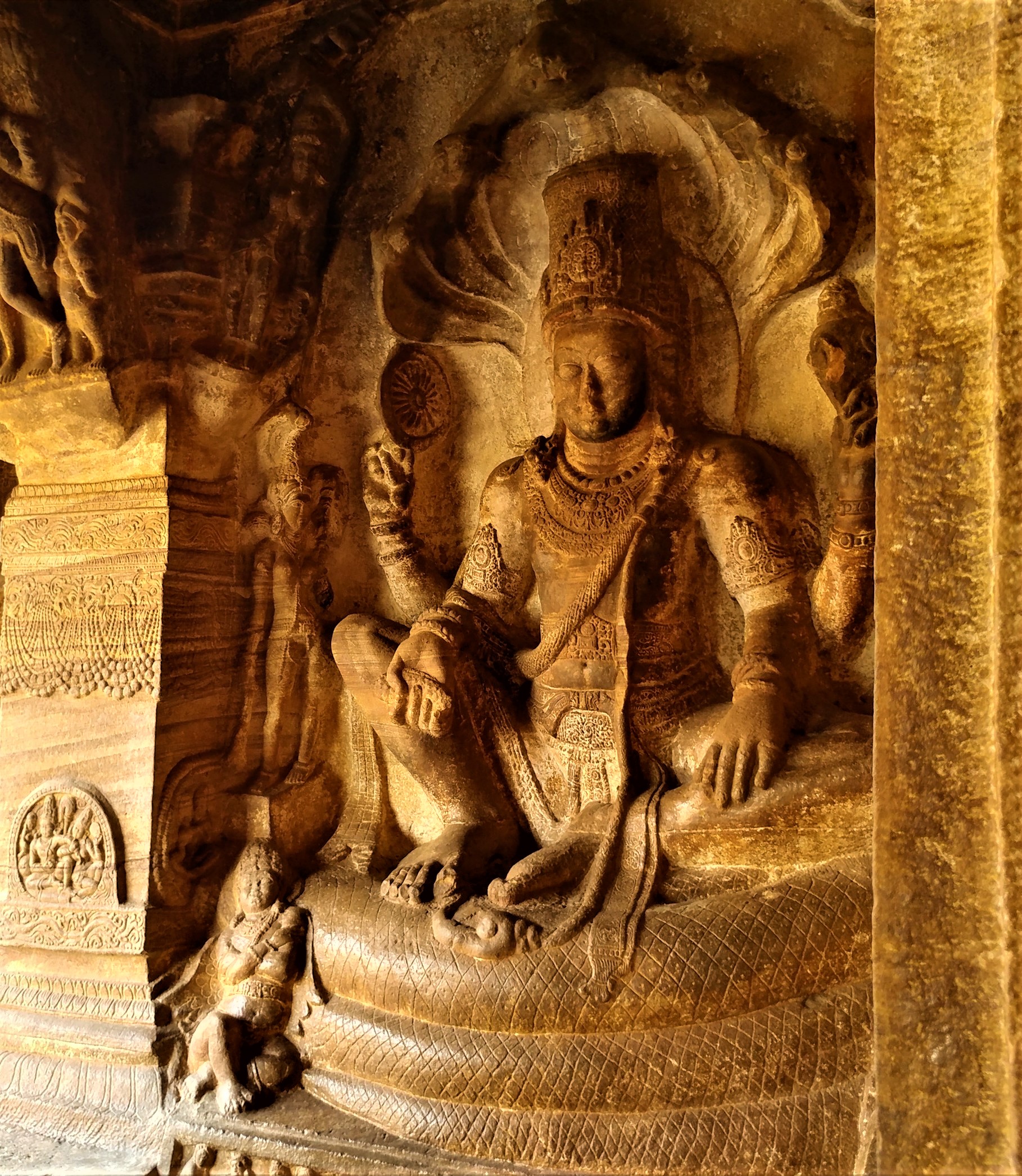 Lord Vishnu on Ananta Naga: Cave 3
Lord Vishnu on Ananta Naga: Cave 3



Comments